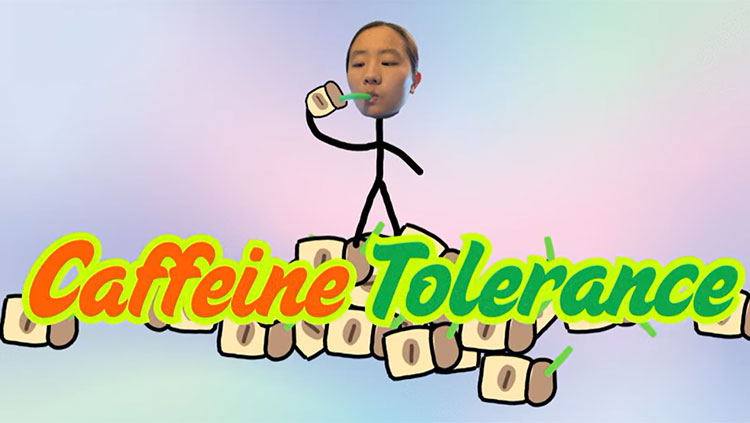
Nicotine is a highly addictive substance found in all tobacco products, including tobacco leaves, cigarettes, cigars, shisha, snuff, and e-cigarettes.
Nicotine arrives in the brain within 10 seconds of smoking a cigarette. Once there, it attaches to proteins on nerve cells called nicotinic acetylcholine receptors, triggering release of many neurotransmitters. It also releases neurotransmitters outside the brain like adrenaline, a stimulant that raises a person’s blood pressure and quickens their heart rate. In the brain, it creates a buzz of pleasure and energy — due to release of dopamine — followed by a calming sensation and a rapid boost in attention and memory. The latter finding has led to ongoing tests of non-addictive nicotine-like substances as possible treatments for cognitive disorders such as schizophrenia, attention-deficit hyperactivity disorder (ADHD), and Alzheimer’s disease.
Tobacco is the leading cause of preventable deaths in the United States, accounting for approximately 90% of lung-cancer deaths, 60% of lung-disease deaths, and 30% of heart-disease deaths. Despite the well-known health risks of tobacco use, however, about 20% of Americans still smoke. Nicotine itself does not cause cancer, but of the thousands of chemicals in tobacco, about 70 are known to be carcinogenic. However, nicotine is responsible for other health risks of smoking, including heart disease and stroke. Like many other addictive substances, nicotine generates tolerance; over time, more and more nicotine is required to obtain the same effect. Also, like other drugs of abuse, nicotine activates dopamine-producing reward pathways that induce feelings of pleasure and affect motivation, creating the urge to use more.
Treatment
Nicotine is so highly addictive that, even though most smokers want to quit, few succeed. For some smokers who are highly motivated to quit, some nicotine replacement therapies (pharmacotherapy) can help. Nicotine packaged as gum, skin patches, lozenges, nasal sprays, or inhalers can sidestep the use of cigarettes or chewing tobacco. Nicotine replacement products provide users with lower overall nicotine levels than they get with tobacco use, eliminate exposure to smoke and its deadly contents, and relieve withdrawal symptoms.
Buprenorphine, used to treat opioid addiction, can also help smokers quit by simulating nicotine’s effect on dopamine. Another drug, varenicline, was approved by the U.S. Food and Drug Administration (FDA) in 2006 for tobacco-cessation treatments. Varenicline is a nicotine mimic that attaches to a special type of nicotinic acetylcholine receptor — one that is thought to be responsible for conveying nicotine’s addictive properties. Bupropion, originally approved by the FDA as an antidepressant, is also sometimes used to help nicotine cessation. Bupropion works by both stimulating the release of and inhibiting the reuptake of norepinephrine and dopamine.
Some doctors consider varenicline the best single-drug option for nicotine addiction, and it is even more effective when combined with counseling and behavioral therapy. For example, smokers are twice as likely to quit if the advice comes from their medical provider. Other useful resources are motivational tools such as cessation hotlines, websites, and social media that promote tobacco-free living.
Adapted from the 8th edition of Brain Facts by Alison Davis.
CONTENT PROVIDED BY
BrainFacts/SfN
References
Baumann, M. H., Solis, E., Jr, Watterson, L. R., Marusich, J. A., Fantegrossi, W. E., & Wiley, J. L. (2014). Baths salts, spice, and related designer drugs: the science behind the headlines. The Journal of Neuroscience. 34(46), 15150–15158. https://doi.org/10.1523/JNEUROSCI.3223-14.2014
Centers for Disease Control and Prevention & National Center for Injury Prevention and Control. (2017). Understanding Drug Overdoses and Deaths. https://www.cdc.gov/overdose-prevention/about/understanding-the-opioid-overdose-epidemic.html
Garnier-Dykstra, L. M., Caldeira, K. M., Vincent, K. B., O'Grady, K. E., & Arria, A. M. (2012). Nonmedical use of prescription stimulants during college: four-year trends in exposure opportunity, use, motives, and sources. Journal of American College Health. 60(3), 226–234. https://doi.org/10.1080/07448481.2011.589876
National Institute on Drug Abuse. (2015). The science behind designer drugs. https://archives.drugabuse.gov/news-events/latest-science/science-behind-designer-drugs
National Institute on Drug Abuse. (2017). Cannabis (Marijuana) DrugFacts. https://www.drugabuse.gov/publications/drugfacts/marijuana
National Institute on Drug Abuse. (2017). Cannabis (Marijuana) Research Report: Is marijuana safe and effective as medicine? https://www.drugabuse.gov/publications/drugfacts/marijuana-medicine
National Institute on Drug Abuse. (2017). Commonly Used Drugs Charts. https://www.drugabuse.gov/drugs-abuse/commonly-abused-drugs-charts
National Institute on Drug Abuse. (2017). Drugs, Brains, and Behavior: The Science of Addiction.
Drugs and the Brain. https://www.drugabuse.gov/publications/drugs-brains-behavior-science-addiction/drugs-brain
National Institute on Drug Abuse. (2017). Heroin DrugFacts. https://www.drugabuse.gov/publications/drugfacts/heroin
National Institute on Drug Abuse. (2017). Methamphetamine DrugFacts. https://www.drugabuse.gov/publications/drugfacts/methamphetamine
National Institute on Drug Abuse. (2018, July 2). The Science of Drug Use and Addiction: The Basics. https://archives.drugabuse.gov/publications/media-guide/science-drug-use-addiction-basics
National Institute on Drug Abuse. (2022). Tobacco, Nicotine, and E-Cigarettes Research Report
What are treatments for tobacco dependence? https://nida.nih.gov/publications/research-reports/tobacco-nicotine-e-cigarettes/what-are-treatments-tobacco-dependence
National Institute on Alcohol Abuse and Alcoholism. (2017). Alcohol Facts and Statistics. https://www.niaaa.nih.gov/alcohols-effects-health/alcohol-topics/alcohol-facts-and-statistics
What to Read Next
Also In Diet & Lifestyle
Trending
Popular articles on BrainFacts.org



















